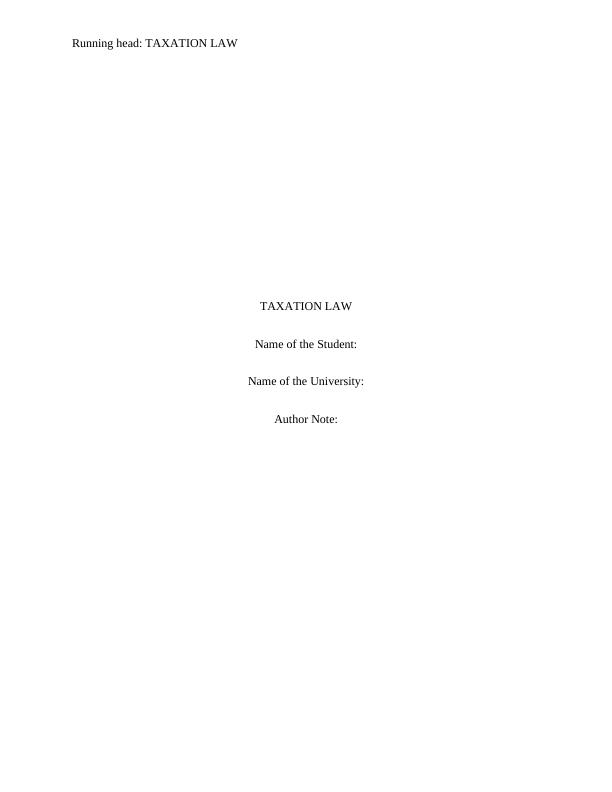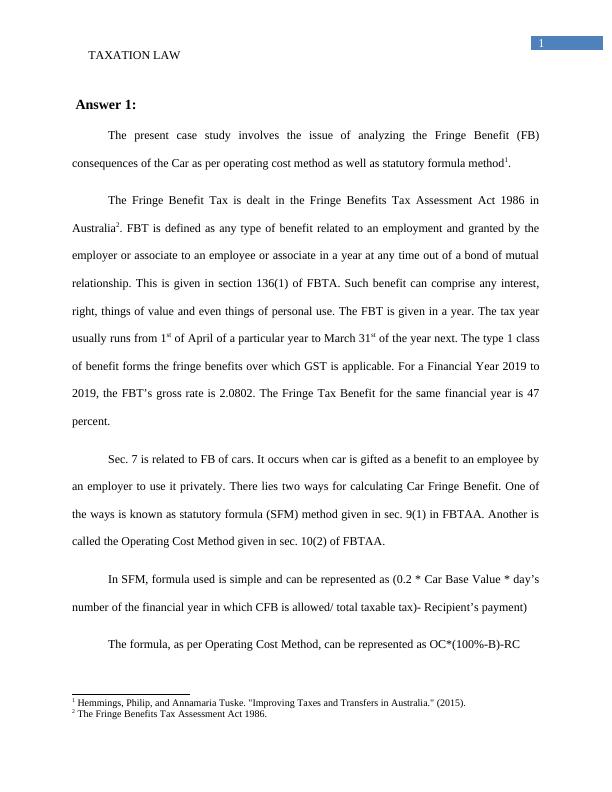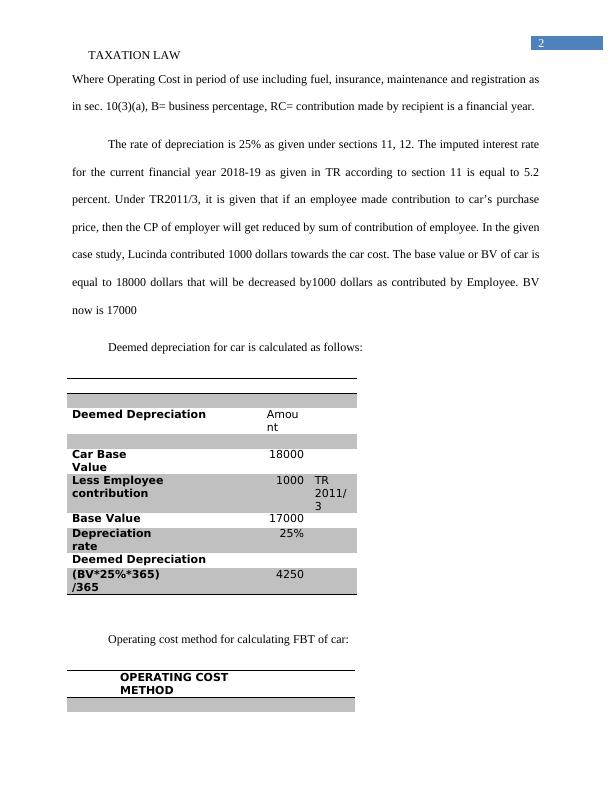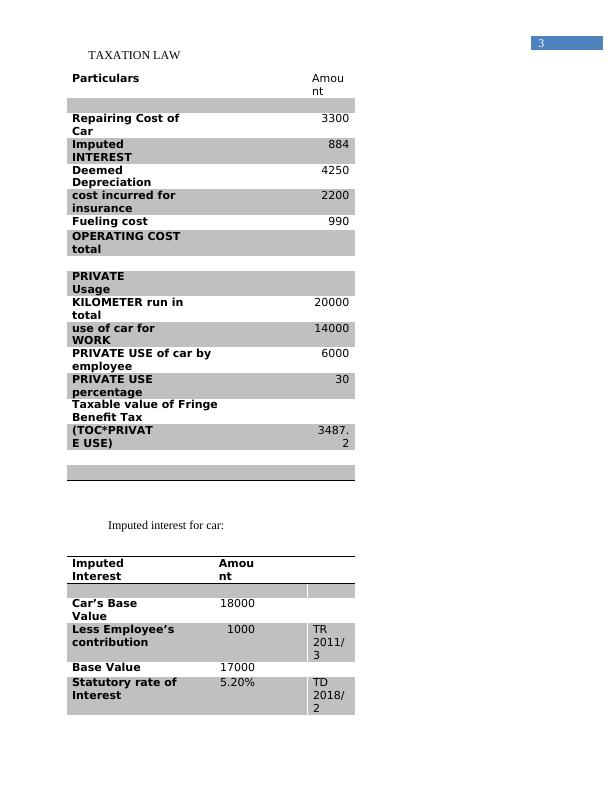Taxation Law: Fringe Benefit Consequences of Car and CG Consequences for Asset Selling
Assessment on tax law concepts, analysis of tax law issues, and application of legal tax principles.
11 Pages2565 Words126 Views
Added on 2022-11-26
About This Document
This article discusses the fringe benefit consequences of a car and the CG consequences for asset selling under taxation law. It covers the methods of calculating fringe benefits tax for a car and the capital gain tax implications for selling assets. The article provides detailed explanations and calculations for both topics.
Taxation Law: Fringe Benefit Consequences of Car and CG Consequences for Asset Selling
Assessment on tax law concepts, analysis of tax law issues, and application of legal tax principles.
Added on 2022-11-26
ShareRelated Documents
End of preview
Want to access all the pages? Upload your documents or become a member.
Taxation Law: Fringe Benefit Consequences and Capital Gain Consequences
|8
|1990
|62
Taxation Law: FBT Implications and CGT Consequences
|13
|2376
|336
Consequences of Fringe Benefit Calculation Methods in Taxation Law
|11
|2302
|227
Computation of FBT Consequences and CGT Implications
|11
|2374
|100
Taxation Law: Fringe Benefit Tax and Capital Gains Analysis
|11
|2516
|278
Taxation Law
|10
|2051
|167




